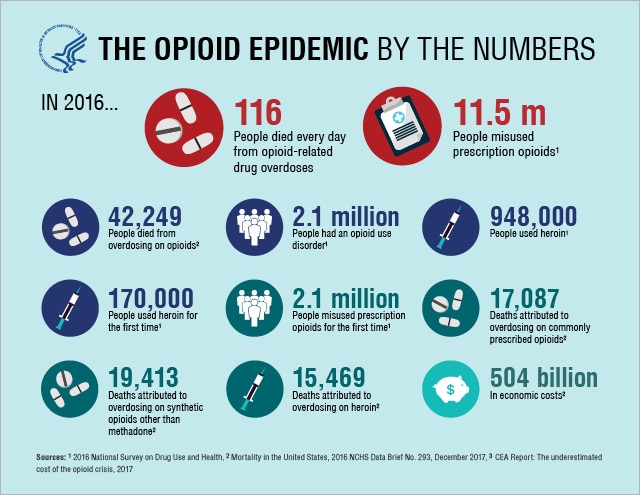Opioids: Legal Manslaughter
March 19, 2018

https://www.hhs.gov/opioids/about-the-epidemic/
Since 1996, pharmaceutical painkillers, known as opioids, have ravished the lives of many families that have been prescribed these highly addictive drugs. Opioids came about as a stronger alternative to your average over-the-counter painkiller, and according to an article written on hhs.com by the U.S. Department of Health and Human Services, “Pharmaceutical companies reassured the medical companies that patients would not become addicted to opioid pain relievers.” With the promise of a strong, non-addictive painkiller, patients across the U.S. began obtaining prescriptions for opioids almost as easily as they could purchase Tylenol. With easy access, people across the nation began overusing Opioids for anything from minor headaches to chronic pain, and with the government’s promise of “addiction free,” the public could pop a pill without having to worry about the side effects that other painkillers held.
Fast forward 22 years later, over 20,000 victims of an opioid addiction have died. It did not take long before people started to push their usage of pharmaceutical opioids to the edge of a cliff, and while many fell off, others jumped. The evolution of becoming addicted was rather simple for many: a weekly pill for a weekly headache quickly became a daily pill for a daily headache; and it evolved from there. While many people were able to control their usage of opioids, others seemed to skip stairs while running up the addiction staircase with every pill until they had finally reached death’s door, and finally, they knocked.
While many states are currently passing laws that will hopefully slow down or halt the epidemic, it may be too late. The epidemic may have started out with the problem being centered on pharmaceutical opioids; the center very quickly grew to include synthetic opioids such as heroin. Many people turned to heroin for the reason that it contained many of the same ingredients that are included in the opioids that they were receiving prescriptions for. With the similarities between them, you would think the opioid market would have had closer monitoring that it had; unfortunately, that was not the case. This allowed for the number of heroin related deaths to skyrocket; and for many, the people around them shared the same fate.
For some, opioids acted like a virus, spreading from mom to dad to son to daughter. This medical microbe would start with one member of a family, say a father, taking a pill until it slowly took over. Let’s say that the same father had a son in a high school environment where drugs are seen as a fun past time and following peer pressure means fitting in. If the child is taking the same opioids as his father, is at a stage where he is more likely to build up an addiction to the opioids, and is faced with drug use weekly, then the son is more likely to evolve the addiction to the usage of other more addicting drugs. While this may seem like a made-up scenario, it is a problem that is being fought in households, communities, and schools throughout the country.
While some may say that it is a problem that we have only because of the way that drugs are advertised among today’s generation, this problem has been seen in the past when the government issued LSD as a safe pharmaceutical drug to use. For anyone who knows anything about LSD, you already know how big of a lie this was and how it started a problem that we are still facing to this day. Therefore, if the government has already seen a problem similar to the current opioid epidemic, then you would think there would be federally enforced laws declaring a nation-wide prohibition of opioids. Unfortunately, state governments pass most laws against opioid usage with no current promise of federally enforced laws to end this legal manslaughter.

